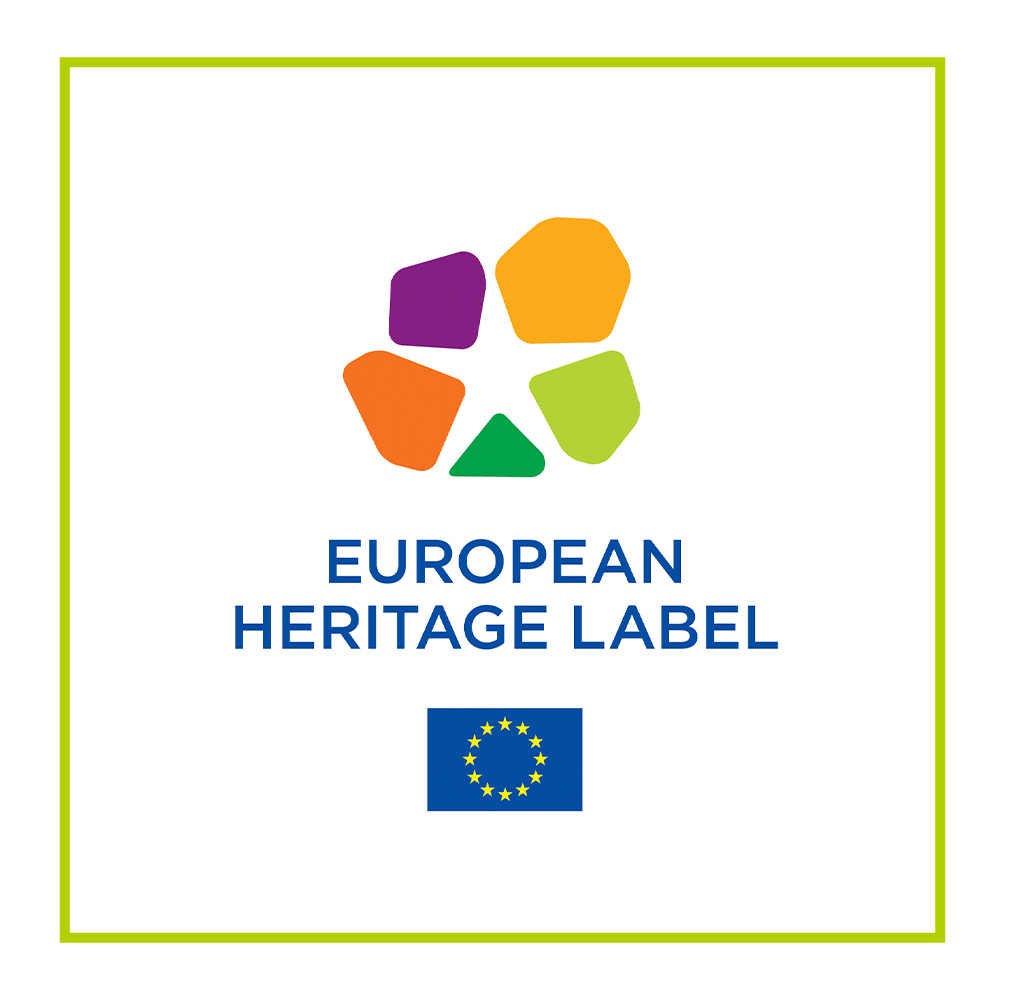The European Heritage Label celebrated in Antwerp
Author: The Kalevala Society Foundation
To news pageSeven new European Heritage Labels were celebrated in Antwerp in May 17th 2024. These were:
Cisterscapes – Cistercian Landscapes Connecting Europe (Austria, Czechia, Germany, Poland, Slovenia)
Monastery of San Jerónimo de Yuste, Cuacos de Yuste (Spain)
Our Lord in the Attic Museum, Amsterdam (the Netherlands)
Royal Theatre Toone, Brussels (Belgium)
The Kalevala – Living Epic Heritage (Finland)
Romanian Athenaeum, Bucharest (Romania)
Sant’Anna di Stazzema, Stazzema (Italy)
The Finnish delegation representing The Kalevala – Living Epic Heritage consisted of Leena Marsio, Lotte Tarkka, Tuomas M. S. Lehtonen, Kati Mikkola, Niina Hämäläinen ja Pauliina Latvala-Harvilahti.

In her acceptance speech, Professor Lotte Tarkka said that the European Heritage Label is a tribute to the Kalevala as a work of art and a field for cultural debate. The Kalevala is Karelian and Finnish at its core, but its artistic and ideological contours are European. The epic tradition is not the tale of Europe but the Europe of tales.
When Elias Lönnrot published the first edition of the Kalevala in 1835 the Finnish elite greeted it as a national epic. It was seen as an invaluable resource for Finland, then an autonomous part of the Russian empire. The Kalevala was said to have lended Finnish culture “an almost European significance”. As one of Lönnrot’s contemporaries put it, the epic was “an entry ticket to the ballroom of civilized nations”.
Standing here, in one such ballroom, I wish to express our deep gratitude to the commission and the international panel for seeing the significance of the project The Kalevala – Living Epic Heritage. Being granted the European Heritage Label is a great honor and opportunity for future discussions.
As a genre, the epic is a hybrid of two cultures: the vernacular and the elite. Epics often relate to traditions of oral poetry, but the literary work is created by a scribe, editor, or author. Lönnrot crafted the Kalevala by using massive collections of oral poetry noted down in Karelia, Finland, and Ingria. As the Kalevala stands for and symbolizes these sources, the label also appreciates the oral traditions behind the epic, and through these traditions also the bearers of those traditions and their descendants. The label plays tribute to vernacular, decentralized creativity – both in the original singers of the oral poetry and the present-day interpretations of the Kalevala.
The Heritage Label is an acknowledgement for the Kalevala as a work of art, and a living cultural discourse. It also makes visible the persistent work by the heritage organizations, learned societies, NGO’s, and institutions behind the Living Epic Heritage: The Finnish Literature Society, the Kalevala Society, Kalevala Women’s Association, and the Finnish Heritage Agency to name a few of the fourteen members in our network.
Agents such as these have for almost two hundred years relentlessly promoted the collection and archiving of oral poetry; sponsored singers, editors, and researchers; and published, popularized, and applied the styles and themes of the Kalevala in society, art, and design.
The core substance of the Kalevala is Karelian and Finnish, but its artistic and ideological contours are European. Its creation demanded a fortunate coincidence of oral poetry being sung in Karelia and Finland, the eastern periphery of Europe, and the Pan-European Romanticist elite interest in such vernacular and archaic folklore. This coincidence in time and place had remarkable but also troubling consequences.
With its central role in the construction of national cultures the epic is a European innovation entangled with nationalism. Thus, also the heritage of the Kalevala is ambivalent: there is a history of ideological manipulation and misuse, and more recently, a debate on cultural appropriation and ownership of cultural heritage.
The project on living epic heritage addresses these questions openly – here, being alive, living and accessible means being reflexive and critical towards the discourses around the epic. The project builds a space for dialogue and establishes new means, sites, and resources for action. In this space the epic and its routinized interpretations are challenged. This enables and promotes critical reflection on cultural imagination. Like all stories, traditions, and heritages, the Kalevala is a means of imagining meaningful pasts and possible futures.
These stories may or may not be called national – but they always operate transnationally and locally. The dynamics of the living European epic is both centripetal and centrifugal: it embraces cultural difference and uniqueness, but it also cherishes and creates shared values, histories, and narratives. It is not the tale of Europe but the Europe of tales.


